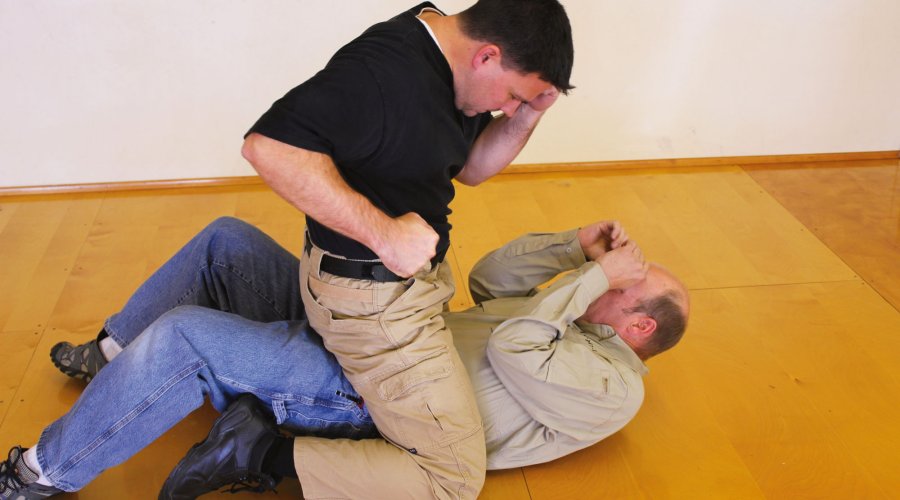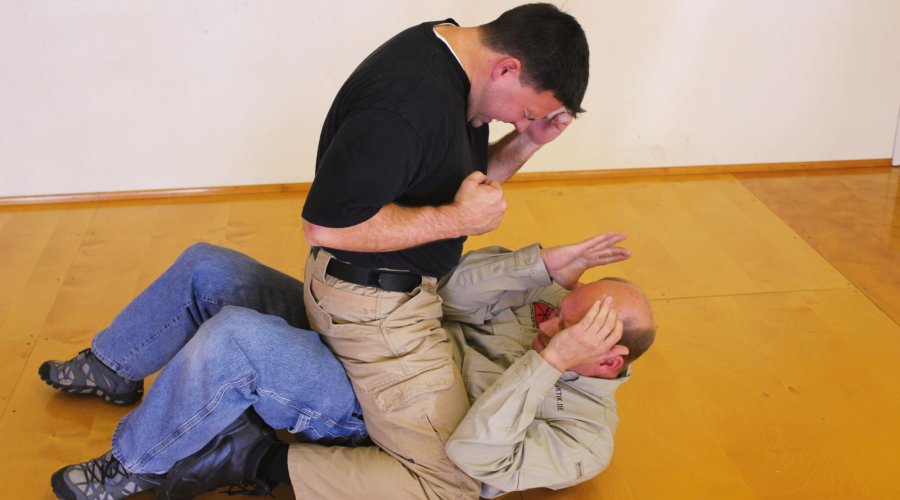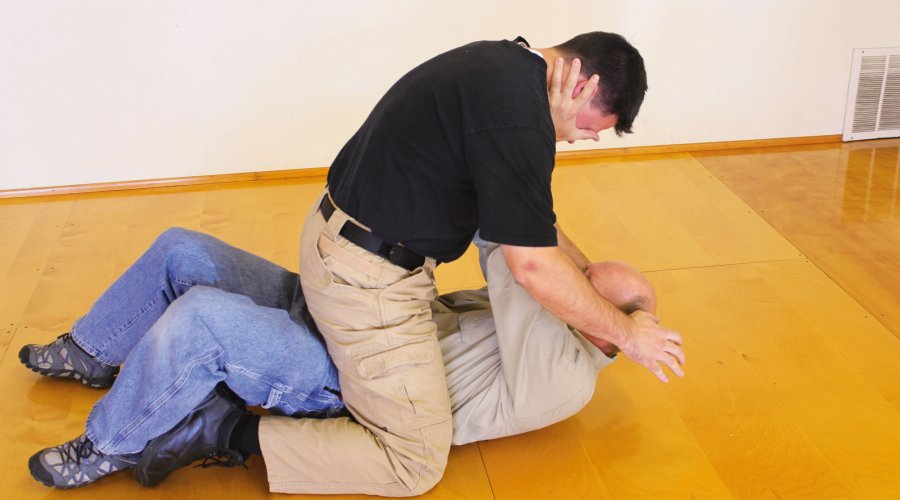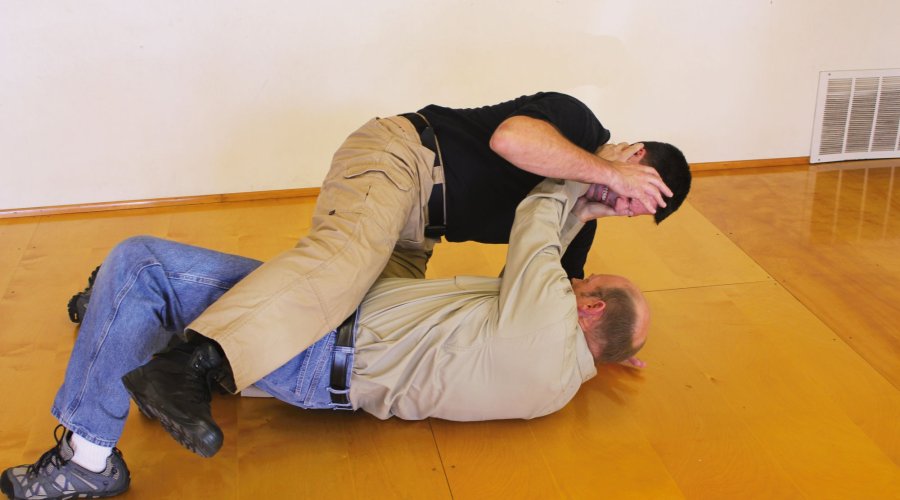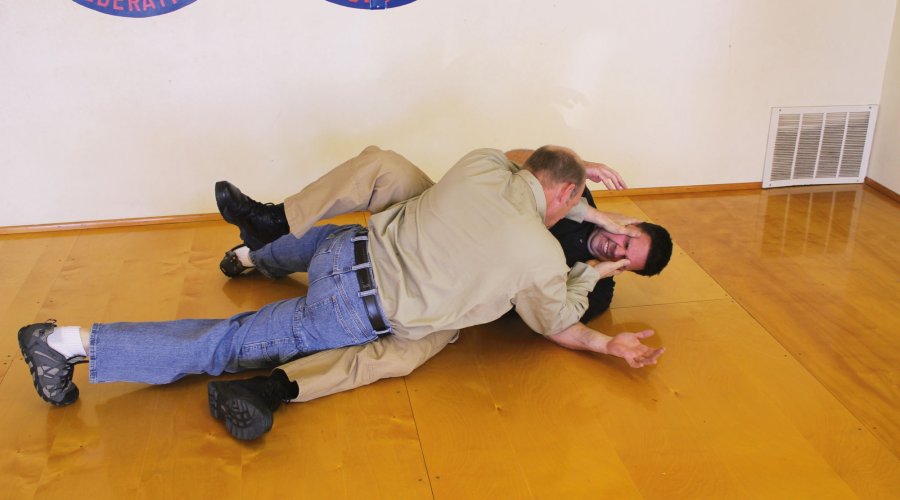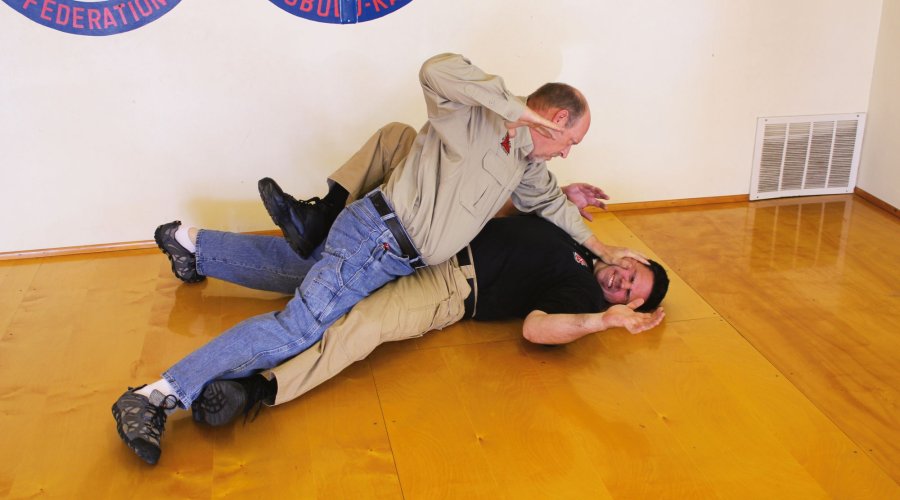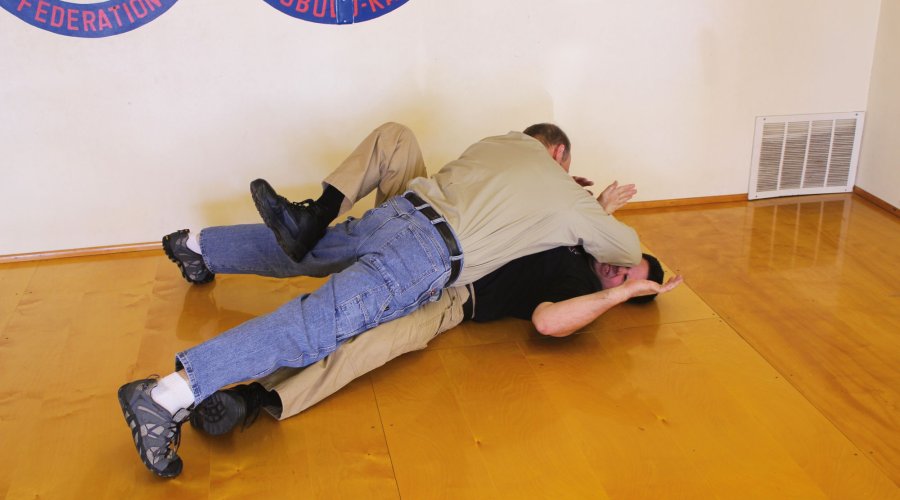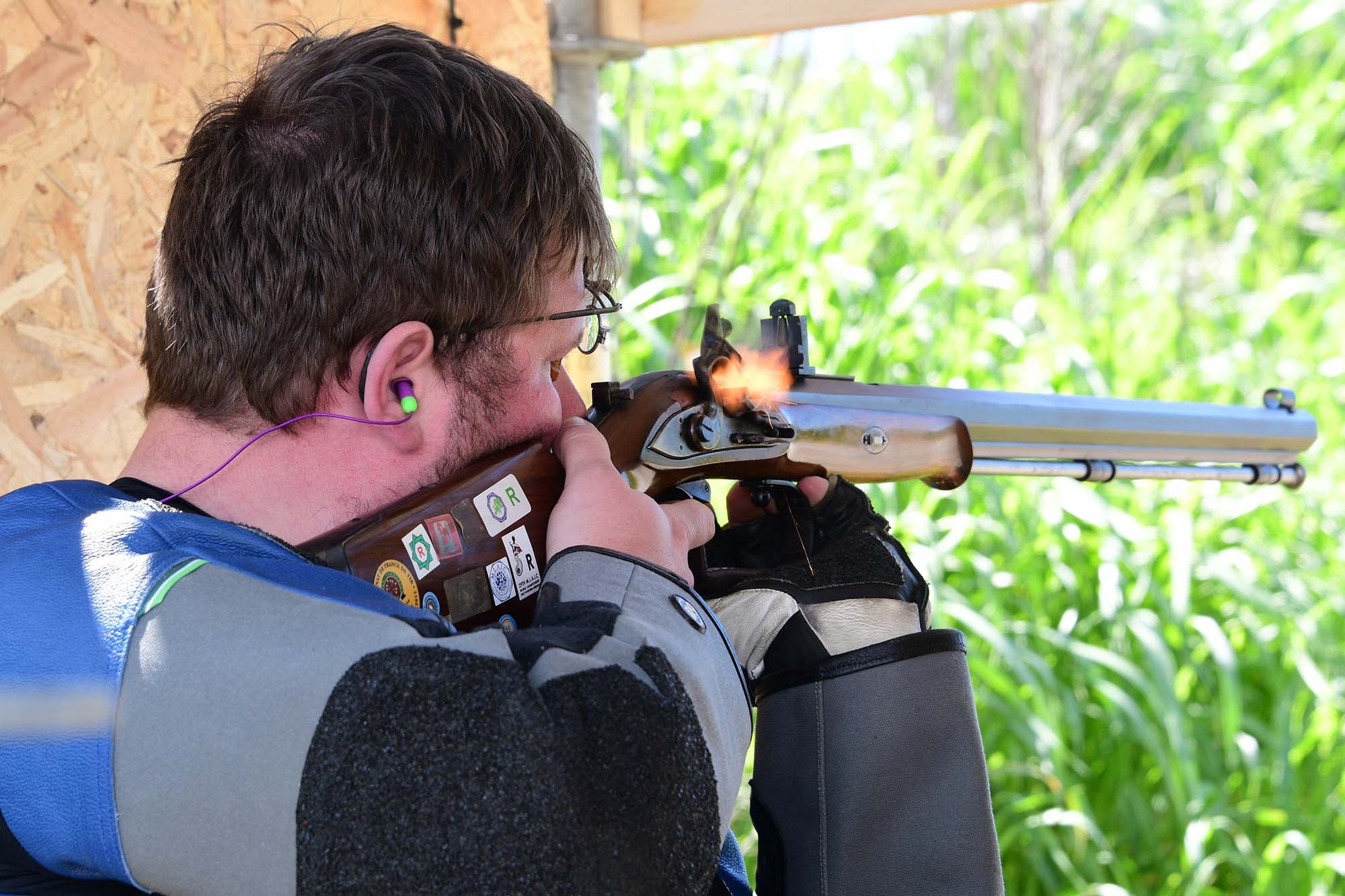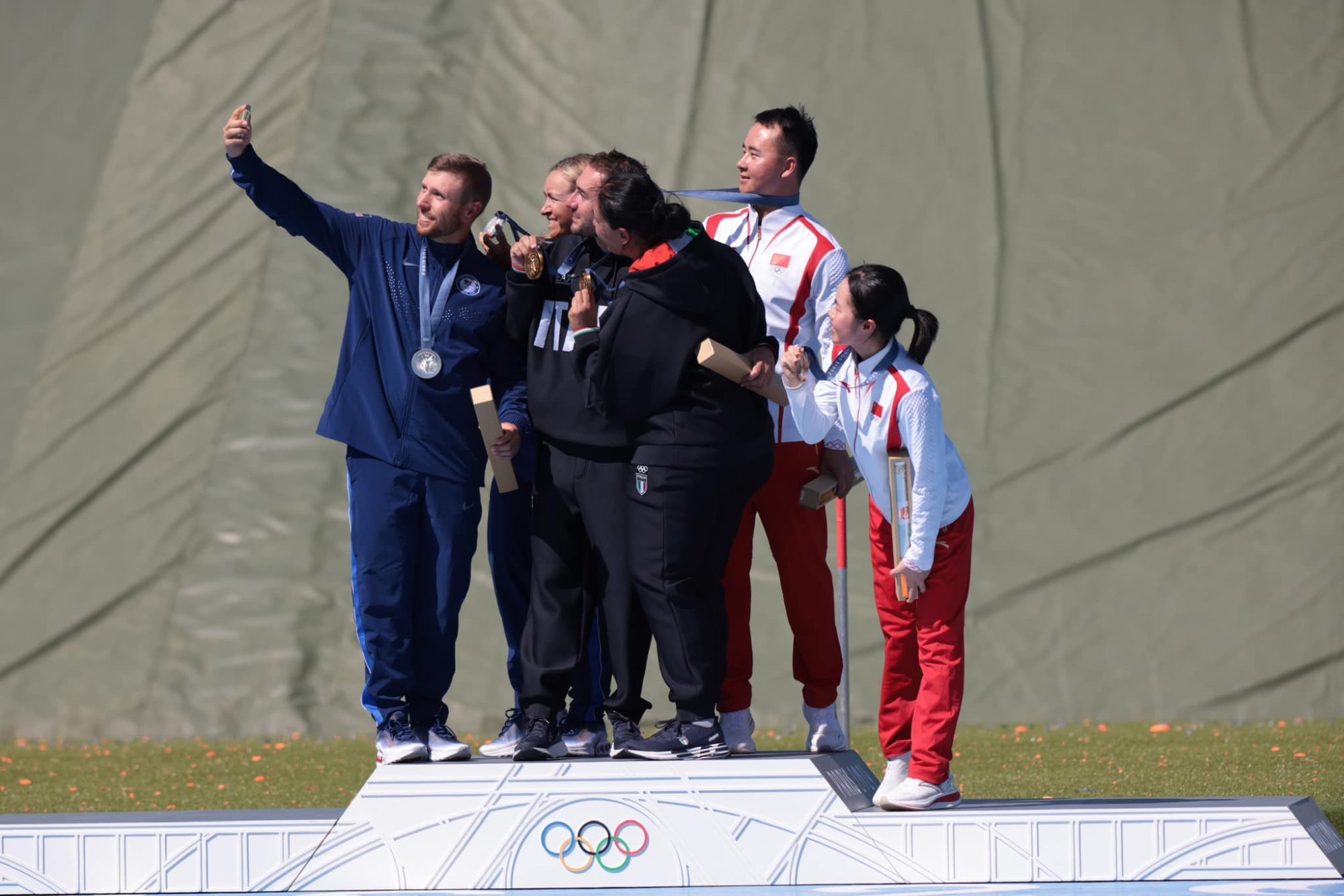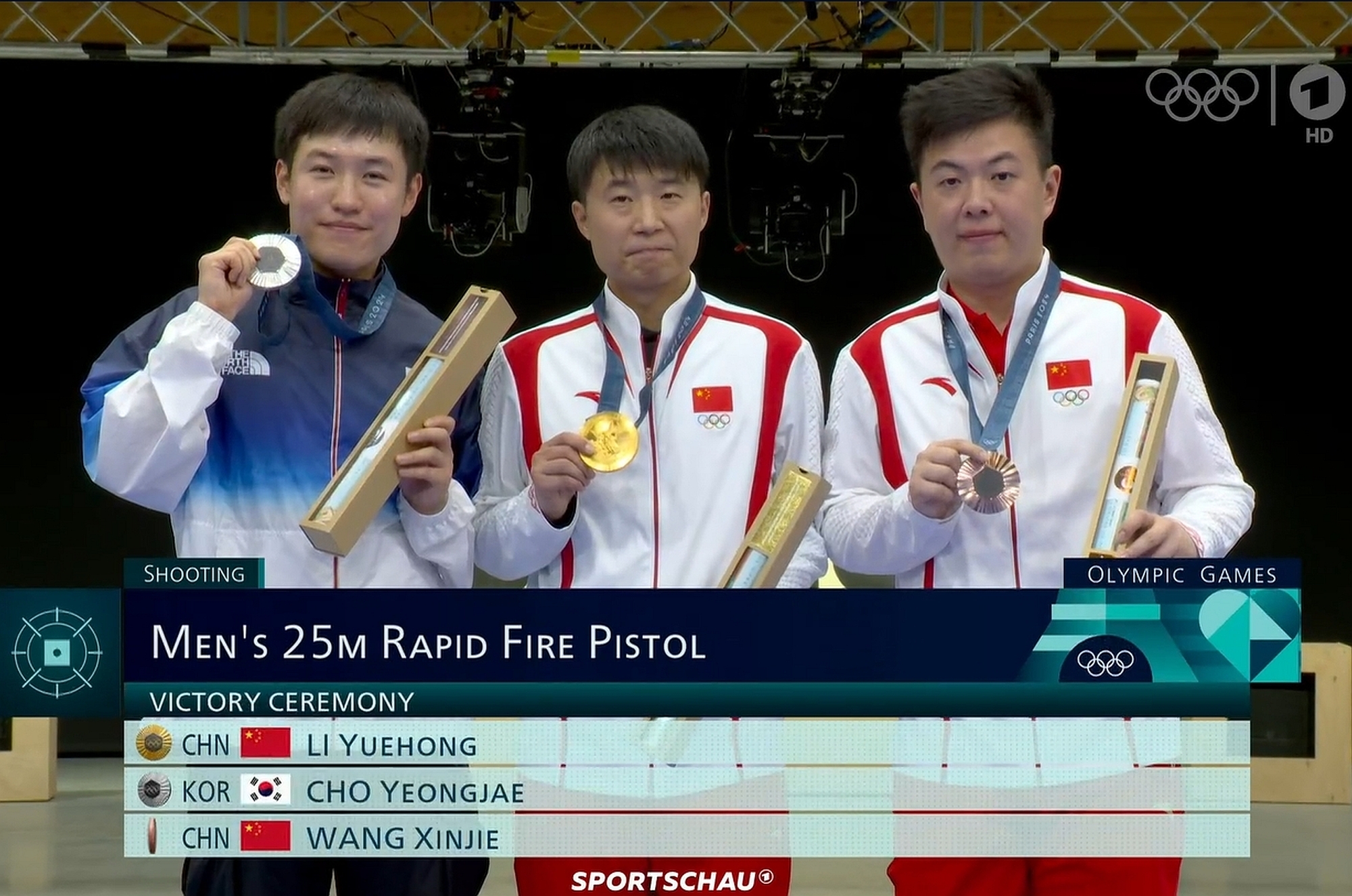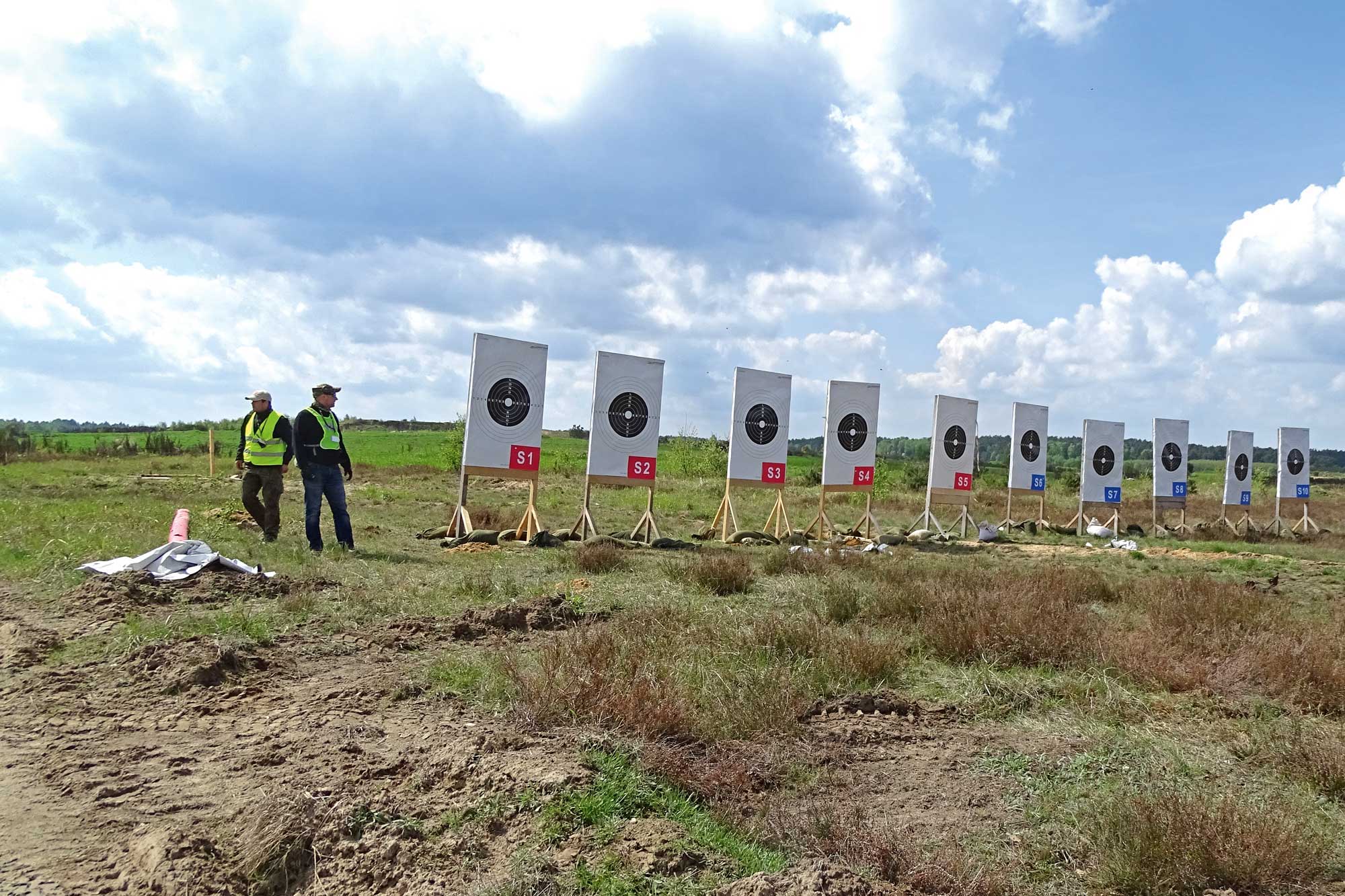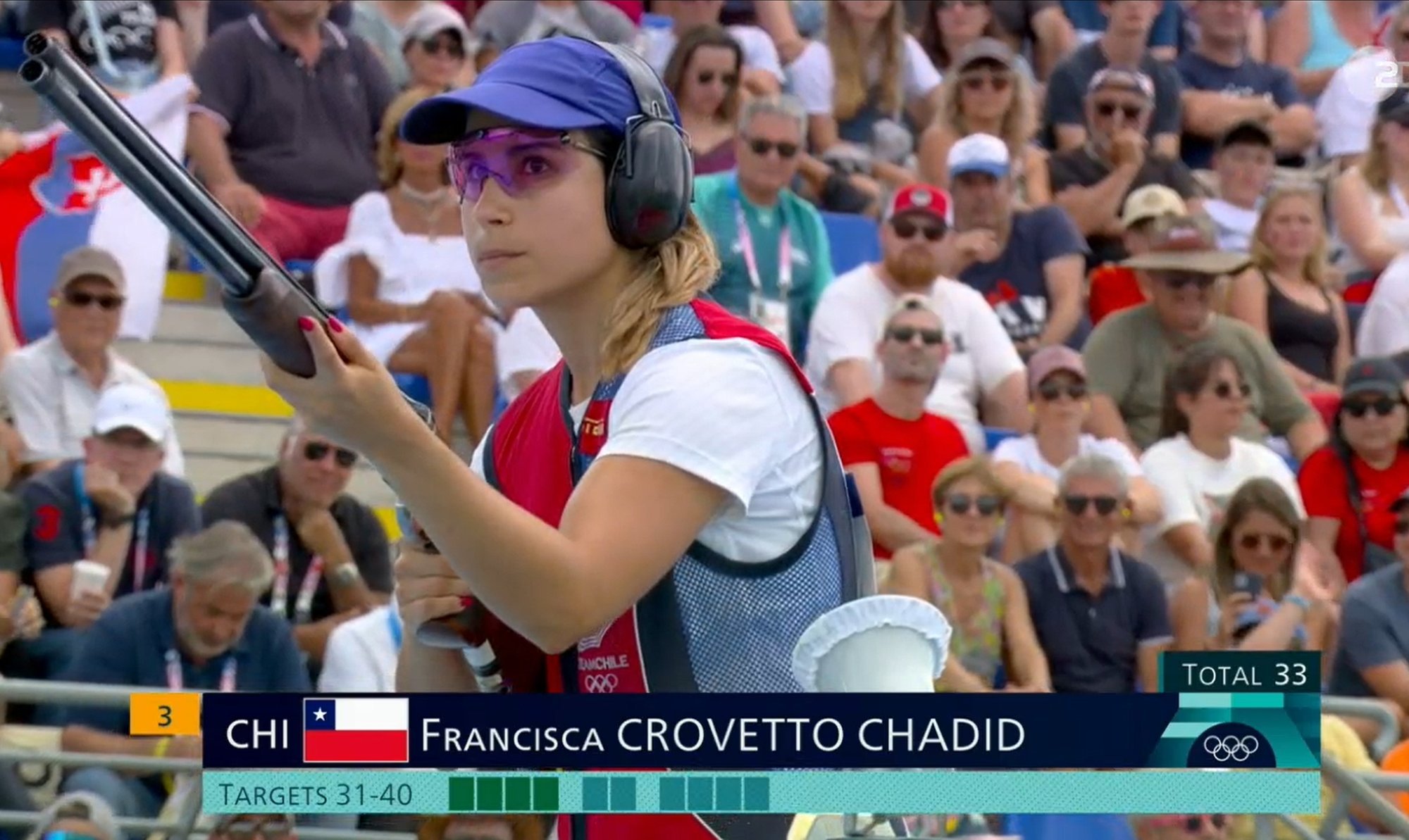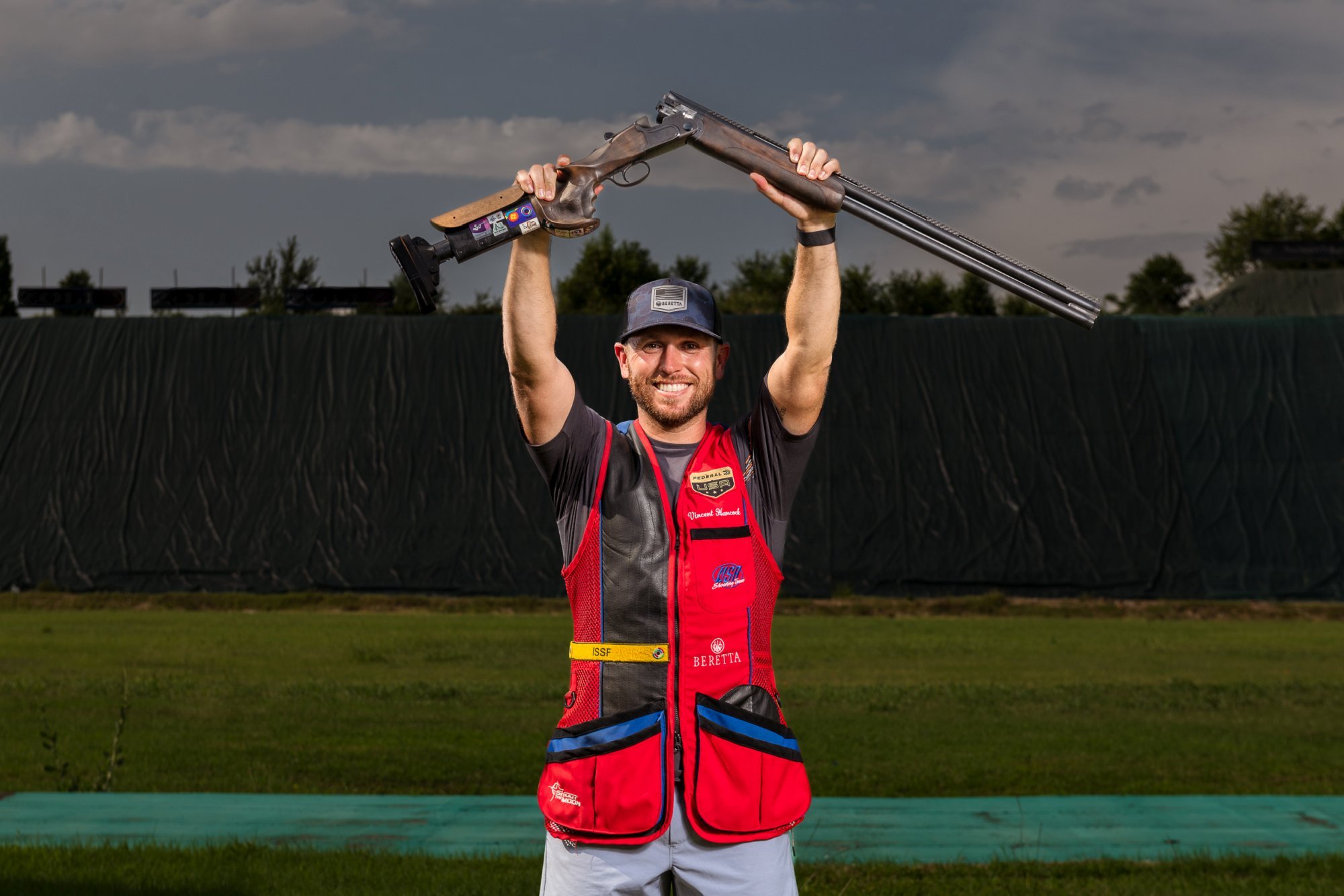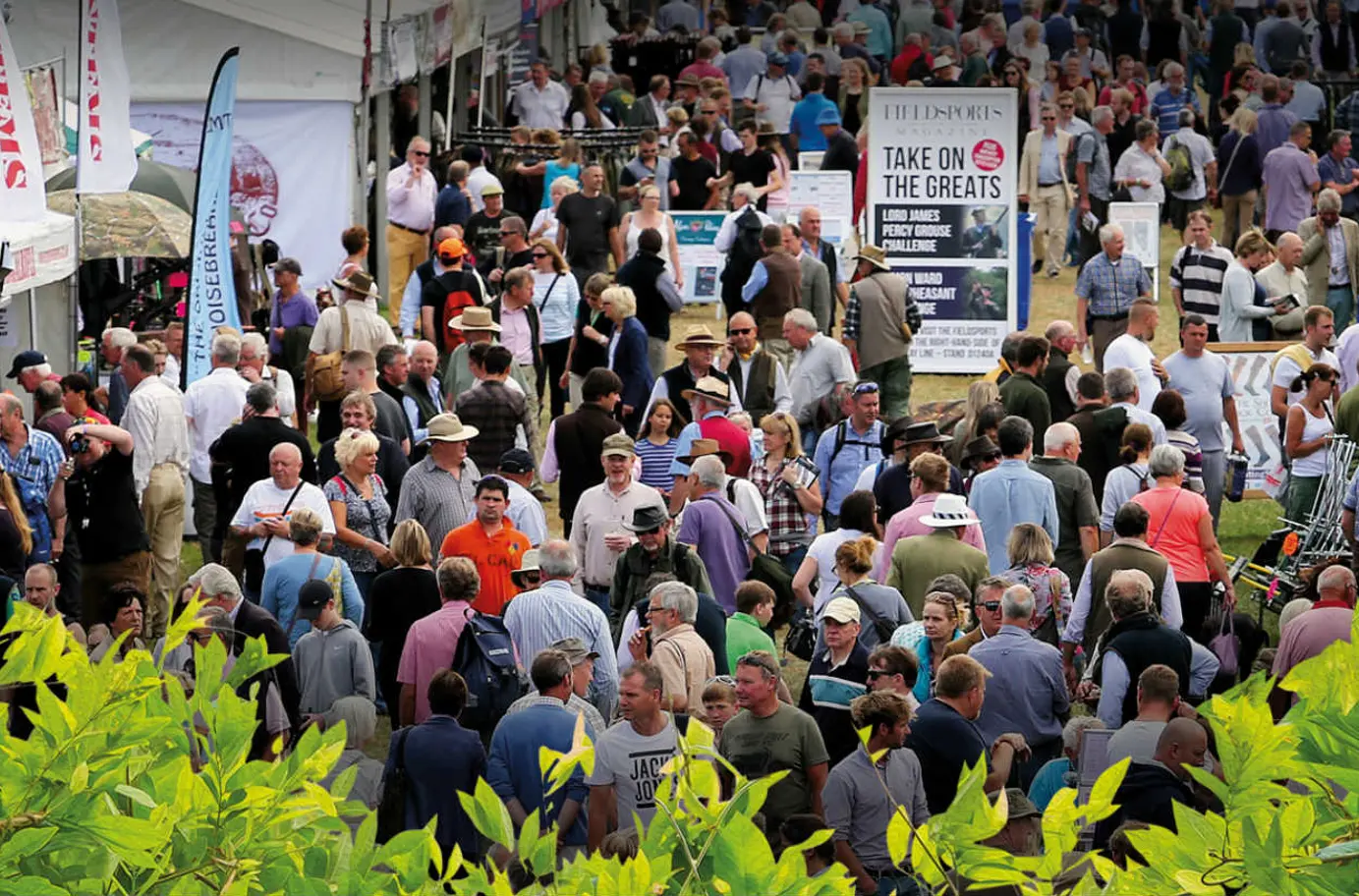One of the most interesting developments in the martial arts scene in recent years is the great popularity of “mixed martial arts” (MMA) and the increased interest in the ground fighting associated with them. Although ground fighting systems such as jujitsu, judo and countless forms of wrestling have existed for a very, very long time, interest in these techniques exploded with the first Ultimate Fighting Championships (UFC) in the early 1990s. But just because MMA and athletic ground fighting are now well known, it doesn't mean they are a realistic basis for self-defense. Since all forms of athletic ground fighting, even in UFC, are bound to a clear set of rules and "illegal" techniques are forbidden, their suitability for realistic self-defense must be viewed with great skepticism. In order to be able to defend yourself successfully against an attack on the street through the right preparation, you have to recognize the hard reality and accept that the players do not follow any rules with their attacks. This will be explained in more detail by a simple example in the form of the "protective position" in MMA sport. Here if you are brought to the ground, your goal is probably to pull the attacker as close as possible to yourself in order to trap him with your legs in the hip area and thus control him. In sporting competition this makes sense because you not only gain a high degree of control over the opponent, but also because the technique can lead to further possibilities such as levers and grips. But in real life, it would be almost fatal to lie on the ground and open your legs, because the aggressor would simply hit us in the sensitive abdomen with a kick or a punch.
Sport & reality
As soon as you move a fight from the ring or the mat, where both fighters act according to clear rules, to the street, everything changes. A single blow or kick, which in sports might be quite ineffective, could be fatal due to the environment if you hit a hard surface or are hit on such a surface. Likewise, any throw on a hard surface can easily lead to paralysis or serious injury. So if you are in a real defensive situation on the ground, you have to be ready to fight for your life immediately. One of the most dangerous situations in sporting MMA competition is the "sitting on" or "pinned down" position. The opponent hits or throws you to the ground. He sits on our chest and has much freedom of movement to hit us with punches and elbow strikes, while we desperately defend ourselves against the blows.
When the opponent has brought us to the ground, it gets hot
In this rather hopeless situation, it is very difficult for us to generate the necessary power to hit the enemy effectively. If we transfer this combat situation to the road, the danger becomes immediately apparent. If the aggressor only lands a solid blow on our head, that then bangs on a hard surface because of the impact, this can quickly lead to unconsciousness and serious – if not fatal – injuries. In a number of traditional martial arts defense measures, attempts are usually made to throw the attacker off by raising the hips and twisting the body. While these techniques may be helpful on the road, they ignore an obvious, sensitive target and the efficient defenses available. If you can’t prevent the aggressor from pinning you to the ground (which would always be the best defense), you must lift your head off the ground and immediately press your hands as hard as possible against your head, whereby the arms and hands form a solid cage against the opponent's blows. This also helps to keep the head away from the dangerous ground and to take hits better. From this position you are ready to perform an effective counterattack as powerful as possible under the given circumstances.
How to free ourselves from the ground position
If the aggressor is sitting on us, tighten your abdominal muscles and drive your elbows into the aggressor’s abdomen with maximum force. Because the opponent has no suitable defensive measures, we repeat our attack if we have not hit. When hit, the opponent's natural reaction will be to bend forward, bringing his/her head within reach of our hands.
Recovering control in ground combat
We then grab the aggressor’s head with both hands and stick our thumbs into the aggressor’s eyes. This allows us to take command and control of the attacker’s head and to manipulate his/her body. As we turn the aggressor’s head, we push our leg in the same direction to hold the aggressor’s leg on this side. We continue to turn the aggressor’s head and roll over onto the outstretched leg to finally throw the opponent off us. We continue our turning or rolling movement so that we are now above the attacker. Throughout the action we keep our grip on the opponent’s head and push him/her to the ground, spreading our legs further and keeping them tensed to better control the aggressor’s body. Pressing the opponent’s head towards the floor and controlling his/her body, we use our own body weight with the other arm to land a powerful elbow strike against the opponent’s head. Alternatively, you can push the opponent’s head to the floor with both hands and fire your knees into the opponent’s abdomen. Both methods should lead to a quick end to the fight. The ground is a dangerous place. If you end up in a self-defense situation there, you have to proceed logically and consistently if you want to survive the encounter.
You can read the previous parts of our series here:



